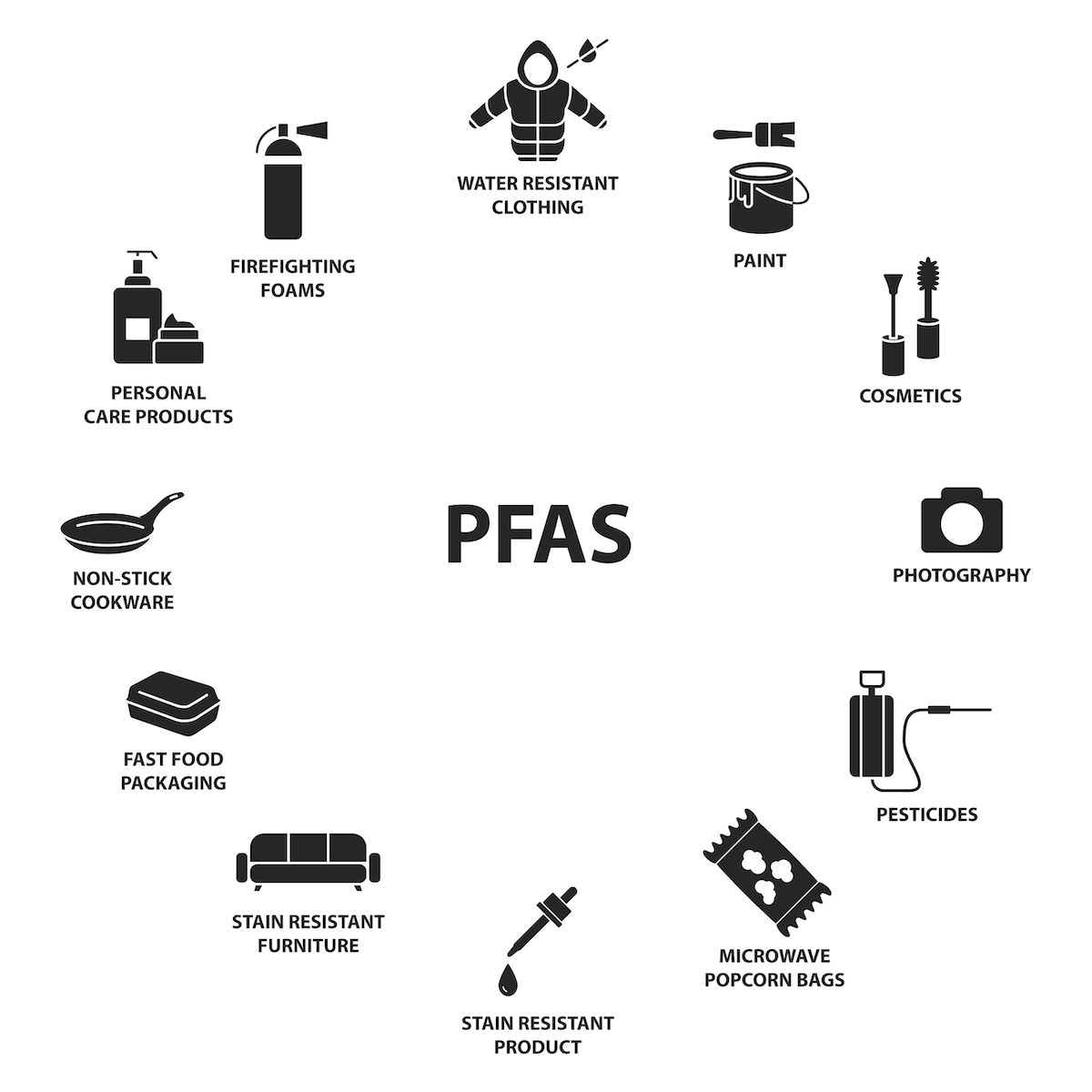Overview of regulation and treatment of PFAS in wastewater
With more than 2,800 contaminated sites in 50 states, public concern about per- and polyfluoroalkyl substances (PFAS) contamination has grown, yet a great deal about these so-called "forever chemicals" remains unknown. Faced with such uncertainty, the U.S. Environmental Protection Agency (EPA) has set no formal limits on a moving target like PFAS despite ongoing discussions on restricting industrial PFAS releases into public sewage treatment plants and waterways. Plans for updating wastewater Effluent Limitation Guidelines (ELGs) this fall would introduce the first federal limits for PFAS in wastewater.
Evolving implications of widespread PFAS contamination have spurred a systemic governmental response to the ubiquitous environmental threat. While multiple federal departments continue researching PFAS chemicals and possible remediation techniques, EPA and Department of Defense (DOD) researchers recently published Draft Method 1633 — a single laboratory-validated method to test 40 unique PFAS compounds at facilities where they are most likely present.
While the DOD completes a collaborative, multilaboratory validation of this method for 2022, EPA's Office of Water encourages interested users to implement the draft version of method 1633 to test for PFAS. Though not nationally required for compliance with the Clean Water Act until formalized as an EPA regulation, the Office of Water anticipates some procedures and performance standards for method 1633 may be reduced during the validation process.
Amidst the uncertainty of ongoing EPA reviews, states like Illinois are considering applying their own standards to restrict upstream industries from releasing PFAS-contaminated wastewater into public sewer systems. The Illinois Association of Wastewater Agencies, in collaboration with other groups and municipalities, is investigating the implications of PFAS regulations for wastewater treatment plants (WWTPs). Below, we discuss upcoming regulations for PFAS in wastewater and potential treatment strategies for remediation.
Regulation of PFAS in wastewater
Proposed regulatory limits of PFAS in wastewater could potentially affect:
- Wastewater treatment plants and associated municipalities. Limiting PFAS in wastewater discharges would apply to manufacturing facilities, particularly those processing plastics, organic chemicals and synthetic fibers. If PFAS chemicals are banned in manufacturing facilities, municipalities may need to monitor them to enforce pretreatment programs. Proposed PFAS regulations could also impose strict responsibilities on water and sewage utilities, designating them as accountable parties that could face steep liabilities. This, in turn, would increase monitoring and enforcement efforts.
- Land application of biosolids. Typically, wastewater biosolids are either applied to farmland to supplement soil nutrients or sent to landfills. To further prevent PFAS contamination, states like Maine are seeking limits for biosolids used on land. If ultra-low levels of PFAS are regulated in groundwater, biosolid land applications may no longer be viable options. The costs of managing biosolids could put additional strain on tight operating budgets of municipal WWTPs and hinder the beneficial reuse of biosolids.
The EPA's continuing research will help identify specific PFAS chemicals by better understanding similar and differentiating characteristics. Understanding these chemical properties further supplements research on addressing contamination with effective tools and technologies, which may later be codified as regulations or enforcement actions. One such action has prompted ongoing discussions about leveraging permits issued by the National Pollutant Discharge Elimination System to WWTPs as a way to restrict PFAS in wastewater. Based on effluent monitoring data from treatment plants with possible PFAS presence in wastewater and stormwater discharges, permits could include amended requirements like:
- Pretreatment programs could be required to include reports on source control and Best Management Practices to protect plant discharges and biosolid applications.
- WWTPs may be asked to implement and document Best Management Practices to address PFAS-containing firefighting foams.
- WWTPs may be required to notify the public and engage with downstream communities and public water systems.
States like Michigan are proposing pretreatment requirements to reduce PFAS in public wastewater. Others are closely tracking toxicity assessments for individual PFAS under EPA's Integrated Risk Information System program. This keeps municipalities informed about contamination sources that could become violations of potential regulations for PFAS limits in wastewater.
Treatment options for PFAS remediation in wastewater
The EPA has devised validated methods to measure 24 PFAS chemicals in wastewater, groundwater and surface water. Researchers are developing more targeted methods to detect and measure unidentified PFAS compounds. Though treatment methods to remove PFAS in municipal wastewater are largely unknown, an evaluation of conventional and advanced treatment processes for small-, medium- and large-scale WWTPs is ongoing. The EPA's wastewater treatment research uses bioassays to evaluate PFAS risks and measure the efficacy of treatments.
Partnering with an environmental expert for PFAS remediation in wastewater
While EPA research efforts continue to forge a clearer understanding of PFAS chemicals, their risks, treatment methods, and financial implications on industries and municipalities, a patchwork of regulations and policies is likely to grow. Uncertainty surrounds proposed limits and how treatment strategies might affect the water, wastewater and environmental industries. For WWTPs and municipalities, the best way forward is to stay updated on proposed federal and state regulations for PFAS in wastewater and plan ahead for treatment processes before the rules take effect.
At Fehr Graham, our diverse team of experts provides engineering and environmental consulting and beyond. Our experienced water, wastewater and environmental engineers are committed to protecting community members and the environment from the adverse effects of PFAS. We can keep you informed about evolving PFAS regulations and help you design plans for wastewater treatment technologies that meet compliance standards.
To learn more about upcoming regulations and guidelines on PFAS in wastewater and how Fehr Graham can help you address PFAS remediation challenges, contact us or give us a call at 630.897.4651.
 |
Chris DeSilva, PE, is the Branch Manager of Fehr Graham’s Aurora, Illinois, office. He is passionate about stewardship and shaping communities by providing a strong foundation for growth. Chris plans, designs and manages construction for wastewater projects. He has experience in facility planning, hydraulic analysis, nutrient removal studies, municipal wastewater treatment process modeling, force main design, wetland and waterway permitting and more. Contact him at |
Collaborative, Insightful, Results-Driven Solutions
Fehr Graham provides innovative engineering and environmental solutions to help improve the lives and communities of our customers.

